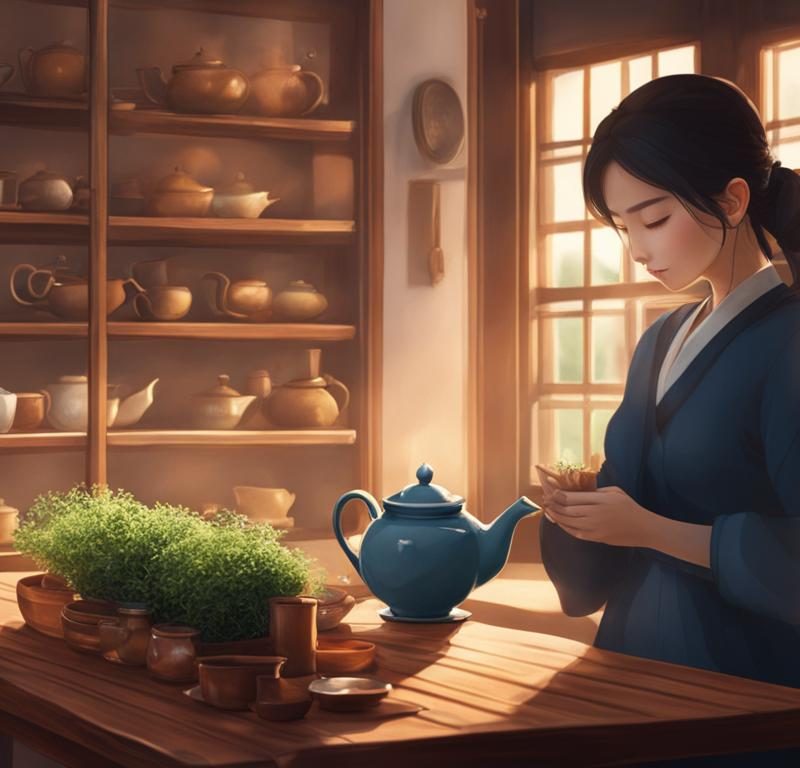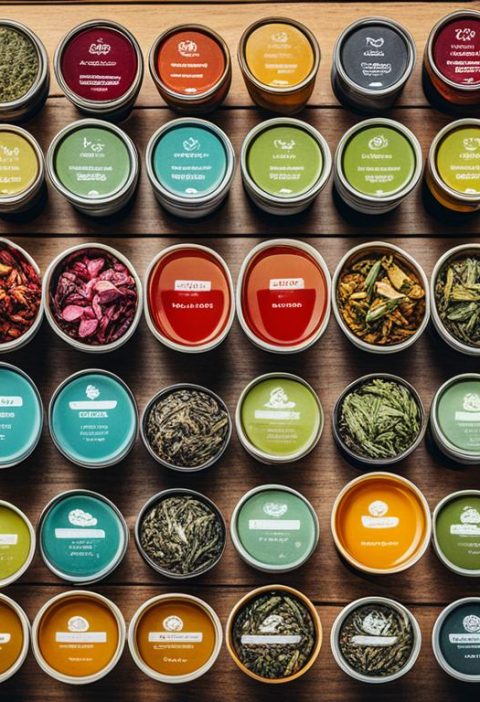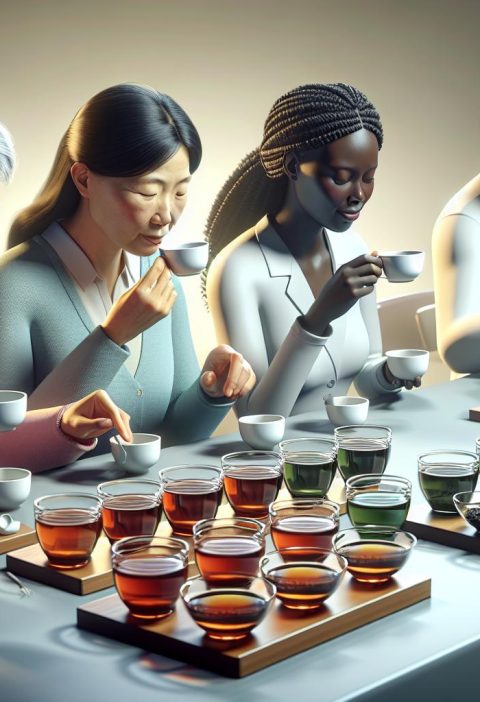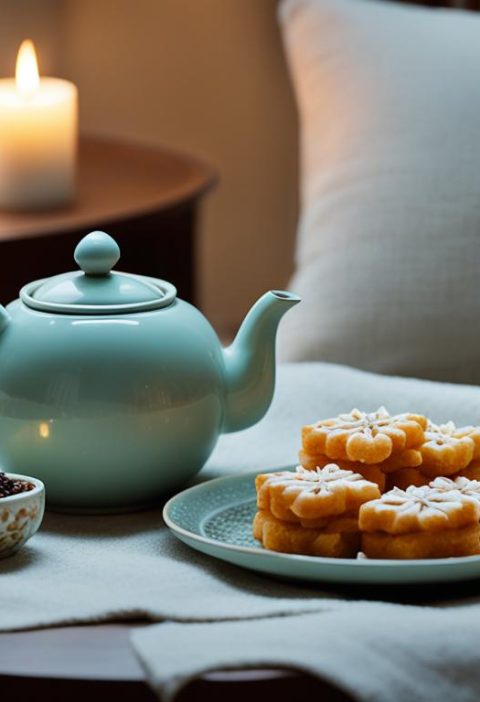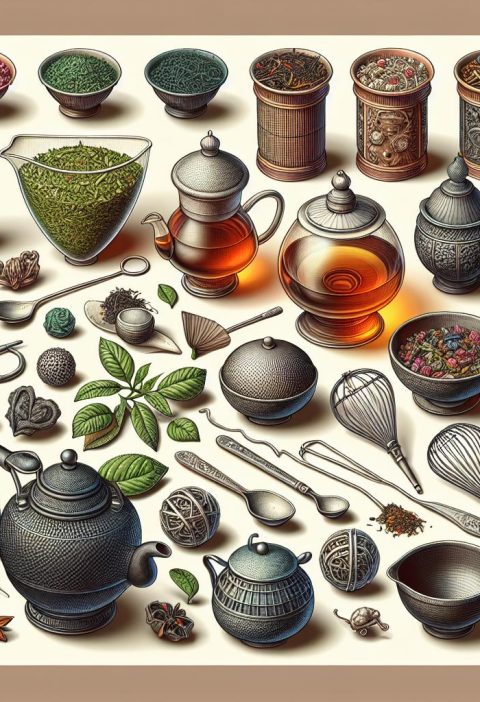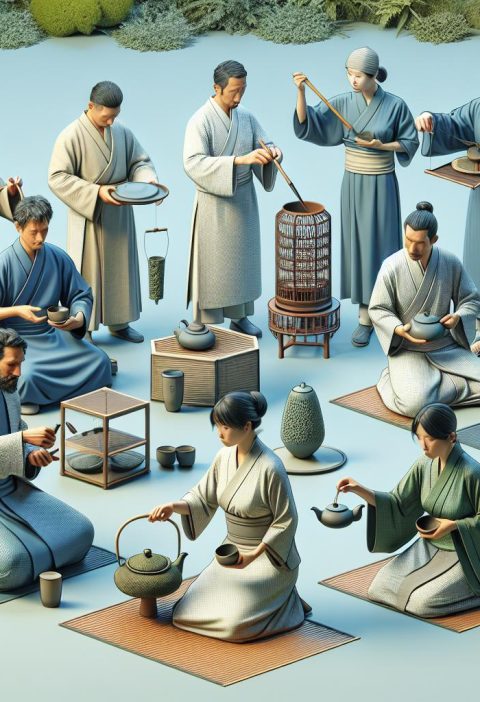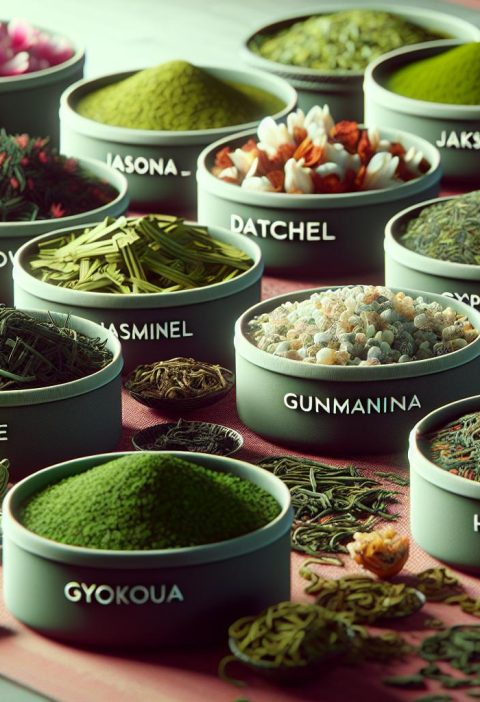Enhancing the flavor of your tea doesn’t have to break the bank. With these budget-friendly tips and tricks, you can transform your daily cup into a gourmet experience without spending a fortune. Let’s explore the cheapest ways to enhance tea flavor and elevate your tea-drinking experience.
Key Takeaways
- Enhancing the flavor of your tea doesn’t have to be expensive. Follow these affordable tips to elevate your tea experience.
- Choosing the right water can greatly impact the flavor of your tea. Look for water with a pH level around 7 and a low total dissolved solids (TDS) level.
- Loose leaf tea offers a more flavorful and cost-effective option compared to tea bags. Research the origin and brewing methods of loose leaf tea to find the best flavors for your taste.
- Mastering the right brewing temperature is crucial for optimal tea flavor. Learn the water temperature cues to enhance the taste of your tea.
- Experiment with brewing times to find the perfect balance between flavor and strength for your tea.
- Attention to teaware and overall tea design can elevate your tea-drinking experience and create a delightful ambiance.
- Explore alternative sweeteners and fruit flavors to enhance the taste of your tea without relying solely on sugar.
- Get creative with flavor combinations to add a unique twist and elevate your tea experience.
- Choosing tea over soda provides a healthier and more cost-effective alternative with a wide range of flavors to explore.
The Right Water for a Better Cup of Tea
When it comes to enhancing the flavor of your tea, one often overlooked factor is the quality of the water you use. The type of water you choose can have a significant impact on the taste and overall experience of your tea. By understanding cost-effective tea flavor enhancement strategies and pocket-friendly tea flavor enhancement techniques, you can take your tea-drinking experience to new heights.
One crucial aspect to consider is the pH level of the water. Ideally, the water you use for brewing tea should have a pH level around 7, which is neutral. Water with a pH level too high or too low may alter the taste of your tea, resulting in a less enjoyable experience. By selecting water with a balanced pH level, you can ensure that the flavors in your tea are not compromised and can fully shine.
Additionally, the total dissolved solids (TDS) level of the water can also impact the taste of your tea. TDS refers to the amount of minerals, salts, and other impurities present in the water. To enhance the taste of your tea, opt for water with a low TDS level, preferably below 50. This will help avoid any unwanted flavors or residues that can affect the overall quality of your tea.
Investing in high-quality water can add a touch of affordable luxury to your tea experience. Consider exploring different water sources and educating yourself about their characteristics to find the right fit for your tea brewing. You may even discover the benefits of a water sommelier course, which can provide valuable insights into water selection and its impact on flavor.
Remember, choosing the right water is a cost-effective tea flavor enhancement strategy that can complement the high-quality tea leaves and elevate your tea-drinking experience.
Choosing High-Quality Loose Leaf Tea
When it comes to enhancing the taste of your tea without breaking the bank, choosing high-quality loose leaf tea is one of the most economical methods for better tea taste. Compared to tea bags, loose leaf tea offers a more flavorful and cost-effective option. The larger, whole tea leaves found in loose leaf tea retain their oils and flavors, resulting in a richer and more satisfying cup of tea.
One of the greatest benefits of loose leaf tea is its ability to be re-steeped multiple times. By using the same leaves for multiple infusions, you can extract a wide range of flavors and get the most out of your tea. This makes loose leaf tea a budget-friendly choice, as you can make the most of a single batch of leaves.
When selecting loose leaf tea, it’s important to consider the origin, characteristics, and recommended brewing methods. Different teas have their own unique flavors, aroma profiles, and optimal brewing parameters. Researching these aspects can help you find teas that align with your taste preferences and ensure a delightful tea-drinking experience every time.
Benefits of Choosing High-Quality Loose Leaf Tea
- More flavorful and aromatic compared to tea bags
- Economical option as leaves can be re-steeped multiple times
- Wide variety of origins and flavors to suit individual preferences
- Increased control over brewing parameters for a customized cup of tea
- Opportunity to discover unique and rare teas
To further enhance your tea experience, consider investing in a tea infuser or teapot with a built-in infuser. These tools make steeping loose leaf tea convenient and mess-free. With a wide range of options available, you can find an affordable and efficient solution that meets your needs.
Now that you know the economical methods for better tea taste, it’s time to discover the secrets of mastering the right brewing temperature, which we’ll explore in the next section.
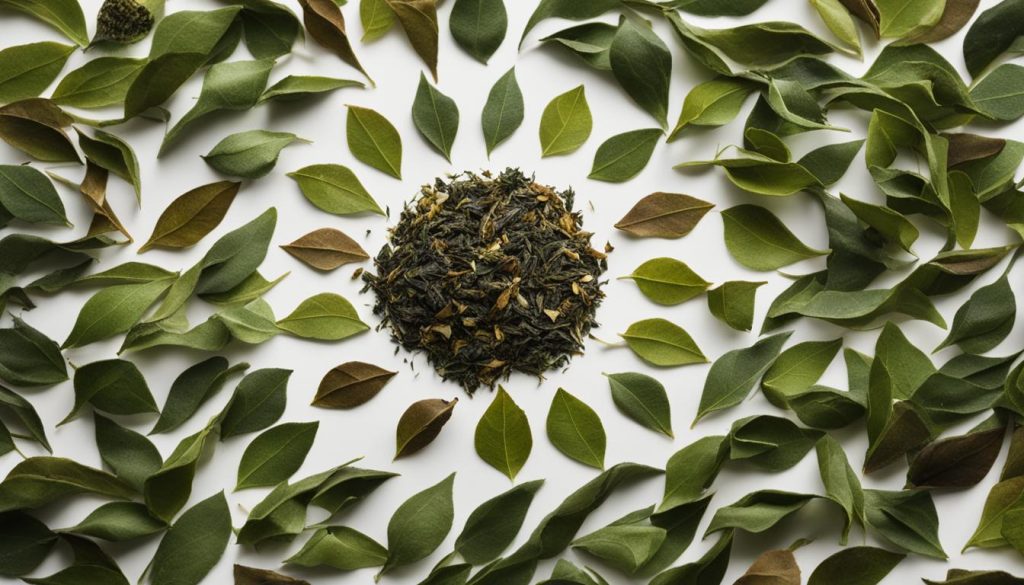
| Loose Leaf Tea Recommendations | Origin | Aroma and Flavor | Brewing Recommendations |
|---|---|---|---|
| Dragon Well (Longjing) | China | Fresh and crisp, with hints of chestnut and mellow sweetness | Water temperature: 175-185°F Steep time: 2-3 minutes |
| Assam | India | Full-bodied and malty, with a rich and robust flavor | Water temperature: 195-205°F Steep time: 3-5 minutes |
| Sencha | Japan | Vibrant and grassy, with a delicate sweetness | Water temperature: 160-170°F Steep time: 1-2 minutes |
Mastering the Right Brewing Temperature
Brewing tea at the right temperature is crucial to bring out its best flavor. While most teas are forgiving and can be brewed with boiled water, some high-quality loose leaf teas require specific temperatures to avoid bitterness or weak flavor. Understanding the optimal brewing temperature for different teas can lead to a more enjoyable and flavorful cup of tea.
When brewing tea, it’s important to pay attention to the water temperature. Here are some guidelines to help you brew your tea at the right temperature:
Black Tea:
Water Temperature: 200°F (93°C)
Black tea is more robust and can handle higher temperatures without becoming overly bitter. Boiling water is typically ideal for black tea.
Green Tea:
Water Temperature: 170°F – 180°F (77°C – 82°C)
Green tea requires slightly lower water temperatures to prevent the leaves from scorching and releasing a bitter taste. Allow the boiled water to cool for a few minutes before brewing green tea.
Oolong Tea:
Water Temperature: 190°F – 200°F (88°C – 93°C)
Oolong tea falls between green and black tea in terms of recommended brewing temperature. Bring the water to a boil and then let it cool for a couple of minutes before steeping the oolong tea leaves.
White Tea:
Water Temperature: 160°F – 170°F (71°C – 77°C)
White tea is delicate and requires lower water temperatures to preserve its subtle flavors. Let the boiled water cool for a few minutes before steeping white tea.
Herbal Tea:
Water Temperature: 200°F (93°C)
Herbal teas can handle boiling water without losing their flavors. Boil the water, then pour it over the herbal tea leaves or bags for a robust infusion.
Remember, you don’t need a thermometer to measure the water temperature. To estimate the temperature, rely on visual cues like the size of bubbles. Larger bubbles indicate boiling or near-boiling water, while smaller bubbles signify lower temperatures. Adjust the brewing time to suit your taste preference, steeping longer for stronger flavor or shorter for a milder taste.
| Tea Type | Optimal Brewing Temperature |
|---|---|
| Black Tea | 200°F (93°C) |
| Green Tea | 170°F – 180°F (77°C – 82°C) |
| Oolong Tea | 190°F – 200°F (88°C – 93°C) |
| White Tea | 160°F – 170°F (71°C – 77°C) |
| Herbal Tea | 200°F (93°C) |
By understanding and mastering the right brewing temperature, you can ensure that each cup of tea you enjoy is filled with the optimal flavors and aromas.
Finding the Perfect Brewing Time
When it comes to brewing tea, timing is everything. Finding the optimal brewing time can make a significant difference in the flavor and overall experience of your tea. Brew for too long, and you risk extracting bitterness from the tea leaves. Brew for too short a time, and you may end up with a weak and underwhelming cup of tea. To enhance the flavor of your tea, it’s essential to experiment and find the sweet spot that suits your taste preferences.
One way to determine the ideal brewing time is to follow the recommended guidelines provided for different types of tea. These recommendations serve as a helpful starting point, guiding you towards a well-balanced and flavorful cup of tea. However, it’s important to note that these guidelines are not set in stone. Personal preferences vary, and what works for one person may not work for another. It’s up to you to fine-tune the brewing time and make adjustments according to your liking.
Take the time to experiment and refine your brewing technique. Start by brewing the tea for the recommended time and then sample it. If you find the flavor too strong or bitter, try reducing the brewing time in small increments. Conversely, if the flavor is weak or lacks complexity, increase the brewing time gradually. Through trial and error, you’ll discover the perfect brewing time that brings out the optimal flavors and aromas in your tea.
Remember, finding the perfect brewing time is a journey of exploration and the key to unlocking a truly enjoyable tea experience. It’s all about tailoring the brewing process to suit your taste buds and preferences. So, take the time to savor each cup and experiment with different brewing times until you find the one that suits you best.
Tea Types and Recommended Brewing Times
| Tea Type | Recommended Brewing Time |
|---|---|
| Green Tea | 2-3 minutes |
| Black Tea | 3-5 minutes |
| Oolong Tea | 2-4 minutes |
| White Tea | 4-6 minutes |
| Herbal Tea | 5-7 minutes |
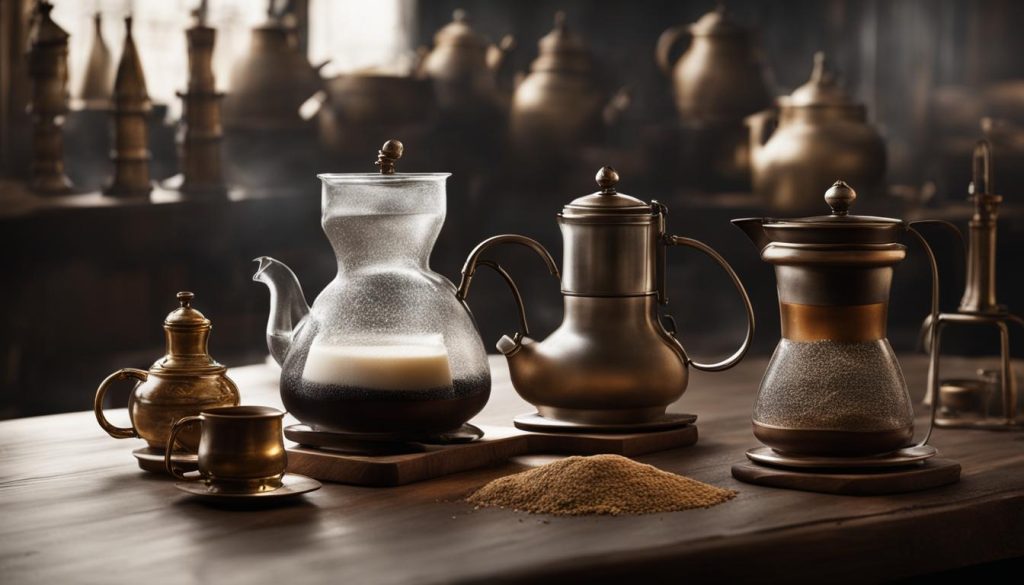
Feel free to use the table above as a general guide for brewing times based on tea type. However, keep in mind that these times may vary depending on individual preferences and the particular tea you’re brewing. It’s always a good idea to taste your tea during the brewing process to gauge its flavor intensity and adjust accordingly.
The journey to finding the perfect brewing time is a delightful adventure that allows you to tailor your tea to your unique preferences. So grab your favorite tea leaves, a timer, and embark on a brewing journey that will enhance your tea experience and elevate your taste buds to new heights.
Integrating Tea Design for a Memorable Experience
Tea design plays a crucial role in enhancing your tea-drinking experience and creating a memorable ambiance. By carefully selecting teaware and decor, you can not only elevate the visual appeal of your tea sessions but also enhance the flavors and aroma of your favorite teas. We know the importance of creating a harmonious and delightful overall experience, so we’ve gathered some thrifty ways to upgrade tea flavor through cost-effective tea flavor enhancement strategies. Let’s explore how you can integrate tea design principles to make each cup of tea an unforgettable experience.
1. Choose Teaware that Enhances Flavor
When selecting teaware, opt for designs that not only look beautiful but also enhance the qualities of the tea. For example, certain materials like ceramic or clay can retain heat, allowing the tea to steep at consistent temperatures for optimal flavor extraction. Experiment with different teapots, cups, and infusers to find the ones that complement your preferred teas and enhance their unique flavors.
2. Pay Attention to Aesthetics
The visual aspect of tea design is equally important in creating a memorable experience. Consider the color and design of your teaware, table settings, and surrounding decor. Harmonize the aesthetics with the tea you’re brewing to create a visually pleasing environment. For example, if you’re brewing a delicate green tea, opt for light-colored teaware to accentuate its freshness. Pay attention to details like tablecloths, flowers, and even the accompanying snacks to elevate the overall ambiance.
3. Incorporate Tea Design Principles
Tea experts and bloggers have mastered the art of creating practical and beautiful tea sessions. Take inspiration from their tea design principles to enhance your own tea-drinking experience. Explore their suggestions on pairing specific teas with complementary teaware, decor, and even background music. By incorporating these ideas, you can create a personalized tea design that aligns perfectly with your taste preferences and elevates the flavors of your teas.
4. Create a Relaxing Atmosphere
The ambiance plays a significant role in tea enjoyment. Set aside a dedicated space for your tea sessions, where you can relax and focus on the flavors and aromas. Consider adding elements like soft lighting, comfortable seating, and soothing background music to create a tranquil environment. This will allow you to fully immerse yourself in the sensory experience of tea, enhancing the overall pleasure and satisfaction.
Integrating tea design into your tea-drinking routine is a cost-effective way to upgrade the flavor of your teas. By carefully selecting teaware, paying attention to aesthetics, incorporating tea design principles, and creating a relaxing atmosphere, you can elevate your tea experience to new heights. Embrace the art of tea design and make every cup of tea a truly memorable experience.
Exploring Alternative Sweeteners and Fruit Flavors
Sweetening your tea doesn’t have to rely solely on sugar. We understand the desire for a healthier and more affordable option. That’s why we encourage you to explore natural sweeteners that can add sweetness to your tea without compromising your health or your budget. By incorporating alternative sweeteners like stevia, coconut sugar, or raw honey, you can enhance the flavor of your tea in a cost-effective and delicious way.
In addition to exploring alternative sweeteners, consider infusing your tea with fruit flavors. Dried pineapple, apple, coconut, and orange rinds can bring a natural fruity sweetness to your cup of tea. You can also experiment with adding a few teaspoons of your favorite fruit juice to your tea to create unique flavor combinations. These fruit flavors not only enhance the taste of your tea but also add a refreshing twist to your tea-drinking experience.
To help you visualize the possibilities, here’s a list of alternative sweeteners and fruit flavors that can elevate your tea:
- Stevia
- Coconut sugar
- Raw honey
- Dried pineapple
- Dried apple
- Coconut flakes
- Orange rinds
- Fruit juices (e.g., strawberry, raspberry, lemon)
By incorporating these alternative sweeteners and fruit flavors, you can satisfy your sweet tooth while enjoying a healthier, more affordable, and flavorful cup of tea.
Affordable Tea Flavor Enhancement Using Natural Sweeteners and Fruit Flavors
| Alternative Sweeteners | Fruit Flavors |
|---|---|
| Stevia | Dried pineapple |
| Coconut sugar | Dried apple |
| Raw honey | Coconut flakes |
| Orange rinds | |
| Fruit juices (e.g., strawberry, raspberry, lemon) |
Trying Unique Flavor Combinations
Get creative with flavor combinations to make your tea taste even better. Experiment with adding chocolate to your chai tea or using dark chocolate to enhance the richness of your favorite black tea. Boba or bubble tea, which consists of tapioca, milk, sugar, and water, can add a unique twist to your brewed tea. By thinking outside the box and trying new flavor combinations, you can discover exciting and affordable ways to elevate your tea experience.
Flavor Combinations to Enhance Your Tea
| Tea Type | Complementary Flavors |
|---|---|
| Chai Tea | Add a touch of chocolate for a rich and indulgent flavor. |
| Black Tea | Pair with dark chocolate to enhance the robustness of the tea. |
| Green Tea | Infuse with mint or citrus for a refreshing twist. |
| Hibiscus Tea | Combine with raspberry or lemon for a tangy and vibrant taste. |
Don’t be afraid to experiment with different flavors and tea blends to create unique combinations that suit your taste buds. Whether you’re looking for a subtle enhancement or a bold flavor combination, there are endless possibilities to explore.
The Benefits of Choosing Tea over Soda
When it comes to refreshing and flavorful beverages, tea offers an array of benefits that make it a worthy alternative to soda. Not only does tea provide a more budget-friendly option, but it also allows you to explore thrifty ways to upgrade tea flavor and enhance your overall tea-drinking experience.
Tea comes in a wide variety of flavors, from delicate floral notes to robust and bold tastes. This diversity allows you to choose from an extensive selection and find the perfect flavor profile that suits your preferences. Moreover, you can easily enhance the taste of your tea with natural and fruit-based sweeteners, making it a budget-friendly tea flavor enhancement option without compromising on flavor.
By opting for tea instead of soda, you can enjoy more than just a delicious beverage. Tea contains natural compounds, such as caffeine and antioxidants, that can provide a gentle boost of alertness and increase your energy levels. Additionally, tea offers a vibrant taste experience with its aromatic and complex flavors, creating a pleasurable and satisfying drinking experience.
So why not give tea a chance? By replacing your daily soda with a cup of tea, you can not only improve your overall health but also discover the joy of a healthier and tastier alternative. Embrace the thrifty ways to upgrade tea flavor and unlock a world of budget-friendly tea flavor enhancement options that cater to your unique taste preferences.
